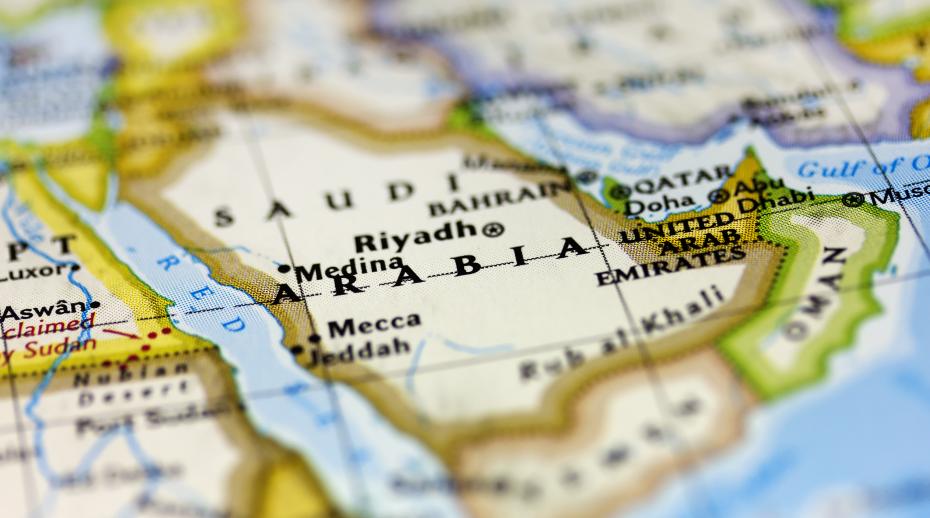Published on April 27, 2023 in JNS.
Photo from Shutterstock.
Less than one year ago, Lawrence Haas, a senior fellow at the American Foreign Policy Council, wrote an article for The Hill entitled “U.S. needs a strategy for a realigned Middle East.” He said, “As recent events make clear, the Middle East is increasingly becoming a bifurcated region, with Israel and its growing Sunni Arab allies on one side, and Iran and … its terror-group allies on the other. Gone are the days when the region was bifurcated in another way—between Israel and everyone else.”
Now that seems like ancient history.
Today, Iran is restoring and improving diplomatic relations with Saudi Arabia, the UAE, Bahrain and Jordan. Syria, the pariah of the Arab League for its genocide against Sunni Arabs, is now being welcomed back into the fold. Last week, the foreign ministers of the UAE and Iran “agreed to enhance cooperation.” Just a short time ago, the UAE was solidly in the anti-Iran regional axis.
China has gladly filled the void of the American withdrawal and signed long-term economic deals with Iran and Saudi Arabia. According to Bloomberg, Beijing is “stepping into the widening breach between Washington and Saudi Arabia. … China has put its stamp on the region in a way that could hardly have been guessed six months ago.” With the help of China, Iran’s “resistance” economy helped it sustain and support its terror proxies.
In this game of musical chairs, Israel is left standing alone. The promise of the Abraham Accords has been tarnished. If the Israeli-Palestinian conflict turns into a full-fledged intifada, Abraham Accords allies and Jordan may downgrade relations. China is so confident of its new status in the region that its Foreign Minister Qin Gang is encouraging talks between Israel and the Palestinians, once the exclusive purview of the American State Department.
The realignment’s foundation is Iran’s overwhelming influence in Lebanon, with its Hezbollah proxy dominating military control and cowing the Lebanese Armed Forces while also holding a veto on Lebanese government appointments. According to Al-Monitor, the “Israeli Defense Ministry reported Hezbollah received $700 million from Iran last year.” Iran’s sway in Syria has grown exponentially, with an expanding IRGC presence and dominance over the beleaguered Syrian military, despite continuing Israeli strikes against Iran’s transfer of precision-guided missiles into Lebanon.
The new orientation includes Iran’s growing entrenchment in Iraq. According to INSS, new Iraqi Prime Minister al-Sudani’s government “has provided incentives and financial payments to pro-Iranian militias in Iraq, with the appointment of senior members of these militias to lucrative positions in the institutions of power. … These internal developments could improve the capabilities of the pro-Iranian militias and the ability of the Iranian regime to use them on the Iraqi front for regional military operations—as well as operations targeting Israel.”
To the south, Saudi Arabia’s upgraded relations with Iran have weakened, if not dismantled, the anti-Iran Arab axis. As the dominant regional player, the Saudis have signaled to the members of the Abraham Accords that they may want to recalibrate their relationship with Israel.
To the east, Jordan, another target of Iranian desires, reported that its Foreign Ministry and Iran’s are moving closer to reestablishing relations. Jordan, a long-time American ally with a cold peace treaty with Israel, is hedging its bets as Iranian militias sit on its eastern border with Iraq. This is another consequence of the Iranian-Saudi realignment.
To the north, Syrian President Bashar Assad, despite the genocide he presided over during the Syrian civil war, is being welcomed back into the Arab League. As an Iranian client, this makes continued Israeli attacks against Iranian transport of munitions, weapons and missiles more challenging, especially with Russia firmly entrenched in Syria with its upgraded naval and air bases.
The repercussions of the new and growing Iranian-Chinese-Russian anti-American axis are causing our Middle Eastern allies to reconsider their relations, transitioning from being firmly aligned with the U.S. to a more neutral position.
The Biden administration hopes that the new Middle East realignment will create an opportunity to entice Iran to reenter a watered-down nuclear deal, allowing the White House to kick the Iranian can down the road to a future administration. If this occurs, expect intense American pressure on Israel to restrain itself against Iran, so as not to cause problems for Israel’s closest ally. Israeli restraint in response to U.S. pressure would be interpreted by Iran as a weakness to be exploited, further tightening the noose around Israel.
Just as the Russian invasion of Ukraine surprised the U.S. and its European allies—and today’s consensus is that the next calamity will be a Chinese invasion of Taiwan—nothing in foreign policy ever goes according to plan. Taking the American eye off the Middle East because of the Ukrainian and Taiwanese predicaments is an invitation to America’s adversaries to take risks they would not have contemplated in the recent past.
The Middle East always seems to have the last word. A year from now, the fickle regional alignments could fall apart or even further isolate Israel. Stay tuned.
